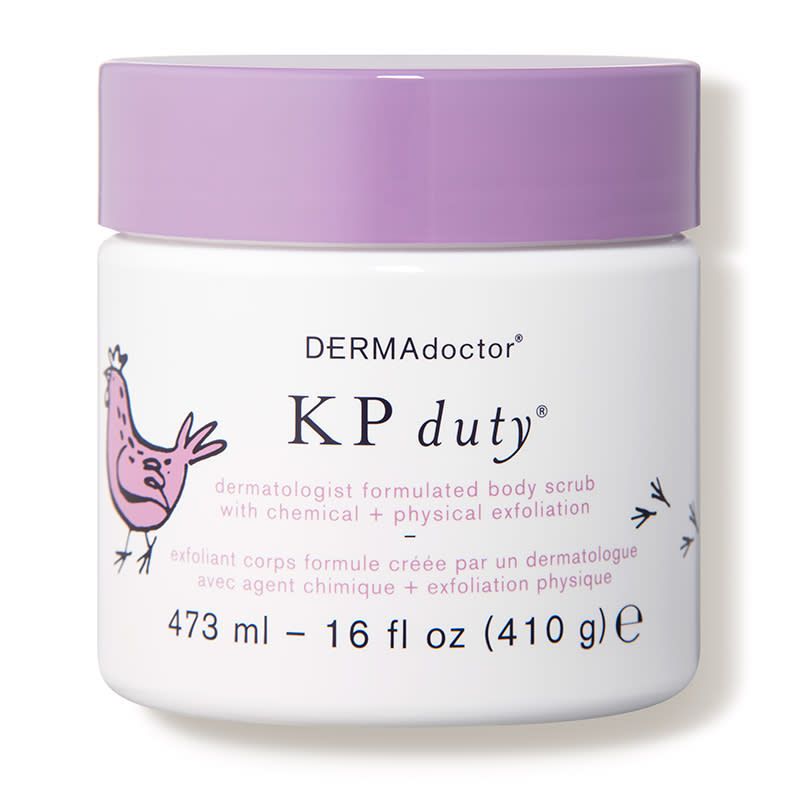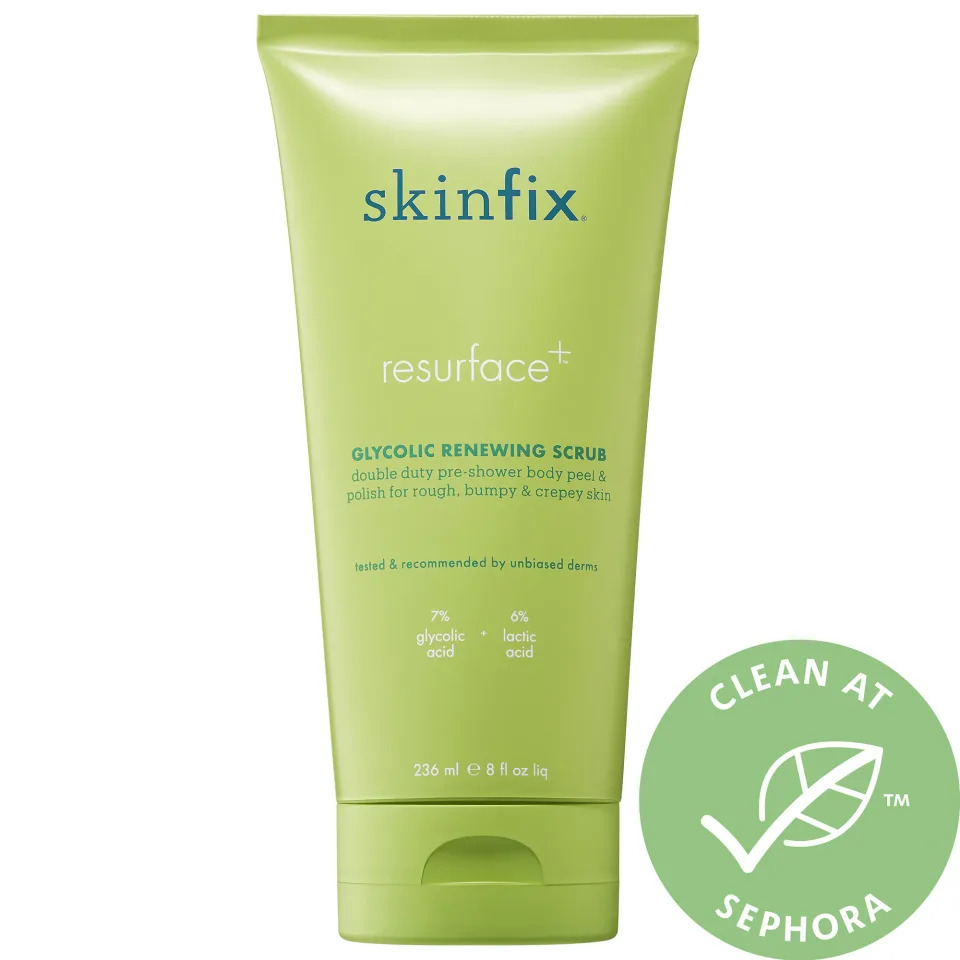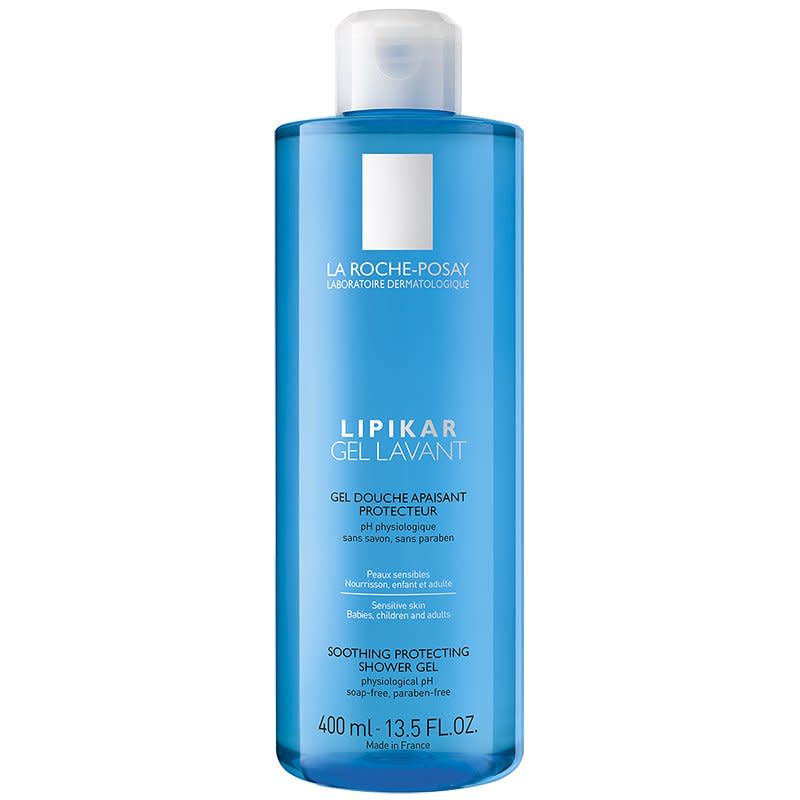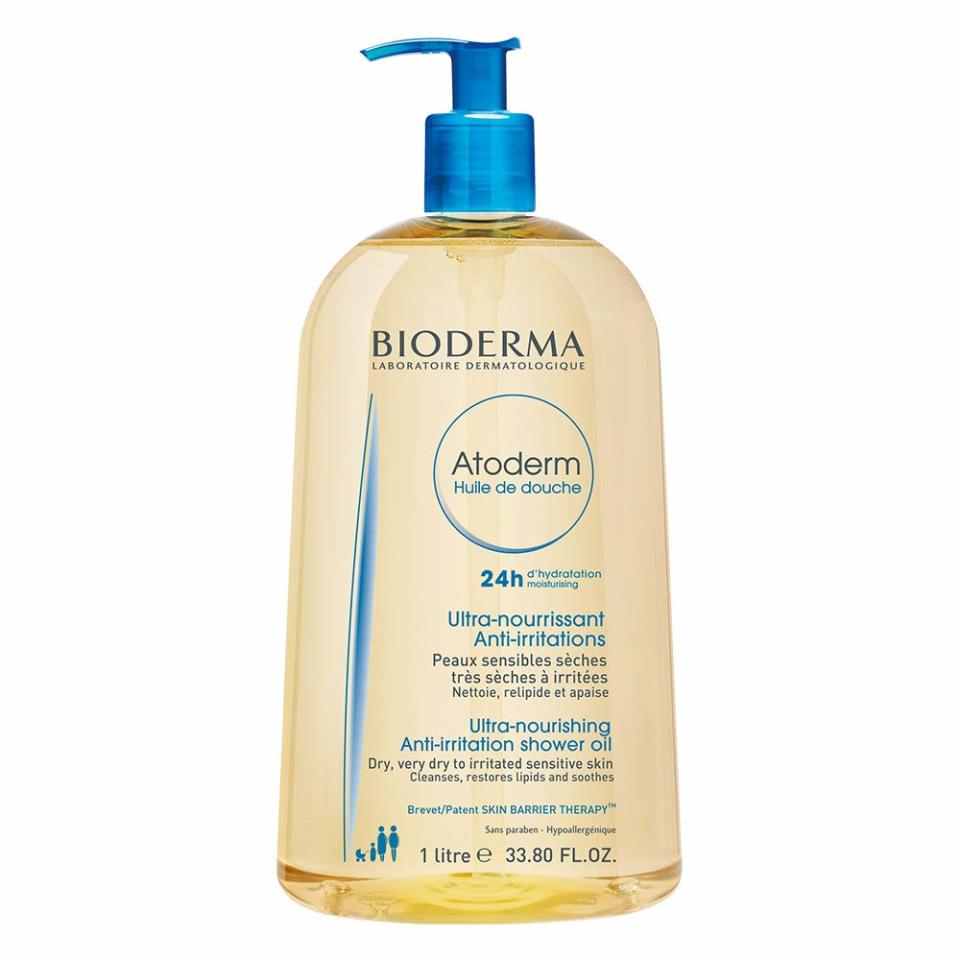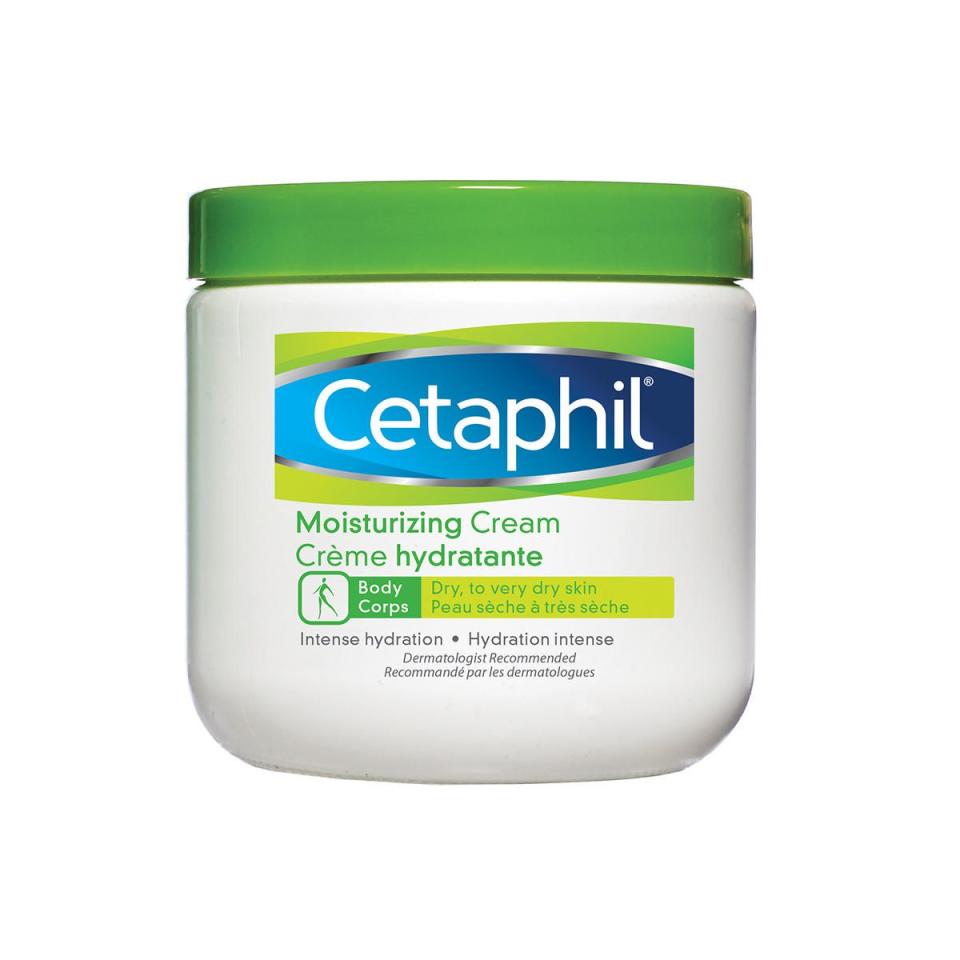What are those red bumps on your arms? How to treat keratosis pilaris like a pro
Looking for more of the best deals, latest celebrity news and hottest trends? Sign up for Yahoo Lifestyle Canada’s newsletter.
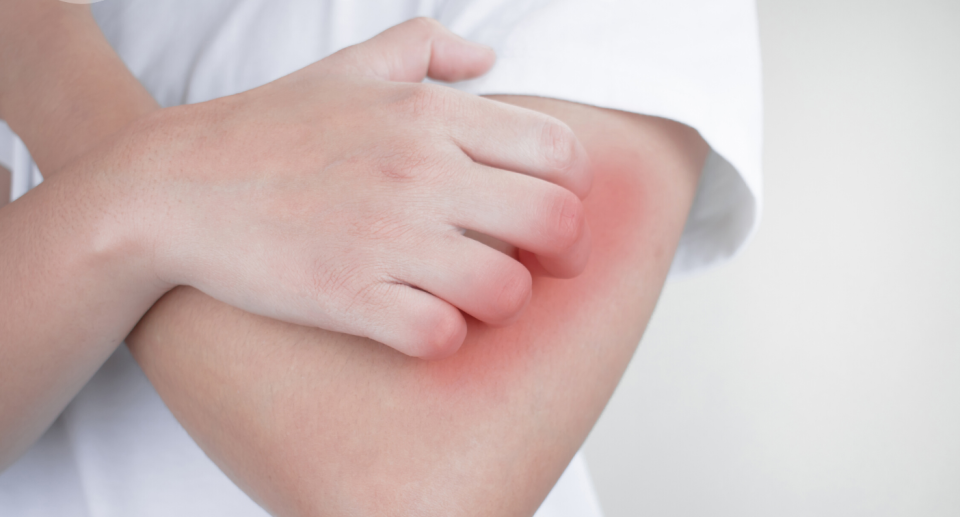
Yahoo Lifestyle Canada is committed to finding you the best products at the best prices. We may receive a share from purchases made via links on this page. Pricing and availability are subject to change.
I was complaining to a friend about how flabby my arms were getting when she turned to me and rolled her eyes.
“Have you seen my arms?” she asked.
I regularly refer to her toned arms as “Michelle Obamas,” but she often feels insecure about the cluster of small red bumps on her arms, which she occasionally also gets on her face and back.
Keratosis pilaris, or “chicken skin,” is a common disorder caused by a disruption of the skin’s natural shedding cycle where the build-up of dry, scaly skin forms a plug at the hair follicle level. While flare-ups can be caused by over-exfoliating, humidity and weather changes, keratosis pilaris (KP) is largely hereditary. As much as 50 per cent of the population will have KP at some point in their lives.
“It typically occurs in childhood and, for many people, they will grow out of it by age 30. There are some people who develop an early-onset variant later in life, as well as those who have a persistent variant that carries on into adulthood,” explains Dr. Sonya Abdulla, a dermatologist in Toronto. “KP may also be associated with other inflammatory skin conditions such as atopic dermatitis or eczema.”
There is unfortunately no cure for KP. However, Abdulla says those who have the early-onset variant have a strong chance of seeing improvement over time.
The goal is to maintain the health of the skin’s barrier. Abdulla walks us through how to best treat KP like a pro before t-shirt season begins.
Look for the right skincare ingredients
“[Maintain] your skin barrier with hydrating skincare products as well as those that have exfoliating properties. I recommend daily use of moisturizers with AHA, BHA or lactic acid when getting out the shower,” Abdulla says. “Quickly pat dry, and while still damp, apply the moisturizer to the skin. As for exfoliating cleansers, look for those containing similar ingredients, these can be used intermittently once to twice weekly.”
DERMAdoctor KP Duty Dermatologist Formulated Body Scrub with Chemical + Physical Exfoliation
Providing up to 80 uses, the fast-acting treatment uses glycolic and lactic acids as well as skin-smoothing beads to buff away dry, damaged, rough and bumpy skin as well as prepping the skin at-home tanners and post-bathing treatments.
SHOP IT: Dermstore, $67 ($50 USD)
CeraVe Renewing Lotion for Extremely Rough and Bumpy Skin
Developed with dermatologists, lightweight, non-greasy lotion moisturizes, exfoliates, softens, and smoothes extremely dry, rough and bumpy skin while helping to restore the natural skin protective barrier. Formulated with essential ceramides and hyaluronic acid, it provides all-day hydration after just one use.
SHOP IT: Shoppers Drug Mart, $17
SKINFIX Resurface+ Glycolic Renewing Scrub
This scrub smooths out the appearance of rough and bumpy skin texture. Active glycolic and lactic acids act as a peel, while biodegradable bamboo polishers gently exfoliate lingering skin cells. It has been tested and recommended by dermatologists.
SHOP IT: Sephora, $40
La Roche-Posay Lipikar Gel Lavant
This soap and paraben-free cleaners gently washes and protects the sensitive skin without disrupting the physiological pH balance of the skin. Made with niacinamide and lipid-replenishing Shea Butter to help restore the cutaneous barrier.
SHOP IT: La Roche-Posay, $21
Bioderma Atoderm Moisturizing and Cleansing Oil for Very Dry Sensitive or Atopic Skin
Made safe to use for the whole family, this shower Oil is composed of bio lipids, vitamin PP and the label’s signature Barrier Skin Therapy patent to nourish and gently clean for very dry to atopic, irritated skin.
SHOP IT: Amazon, $19 (originally $20)
Cetaphil Moisturizing Cream
An emollient and humectant-type moisturizer, this bestselling formula is designed to bind water to the source and prevent moisture loss while providing immediate, long-lasting relief for even severely dry, itchy skin,
SHOP IT: Amazon, $16 (originally $20)
Retire your loofah
“[Take] caution [with exfoliating] as some [products] can be irritating, causing inflammation and exacerbation of the KP. Keep exfoliation with any loofah, scrubs or face cloths to a minimum since these tend to be too irritating and may actually flare KP,” says Abdulla.
ALSO SEE: Here's why you should stop using a loofah
Invest in natural fibre clothing
“Sensitive skin types [like KP] are often prone to eczema as well. These patients tend to do well with natural fibre clothing such as 100% cotton, linen or silk. Wool tends to be irritating and should typically be avoided if particularly sensitive or at a minimum, worn with a layer of cotton underneath to prevent irritation,” says Abdulla.
Watch out for acidic foods
“There is no established clinical evidence showing direct causation between KP, eczema and diet,” says Abdulla. “There are however some foods that may be irritating to the skin, especially in babies or children where direct contact of food and saliva with the skin trigger irritation. These include foods that are more acidic such as citrus, tomatoes.”
Consider laser treatments
“Once skincare routines are on point and the skin tends to smooth, patients often find there is residual erythema or redness at the hair follicle. Additionally, there is also a variant of keratosis pilaris (KP Rubra), where KP papules or bumps are quite limited but follicular erythema is a primary concern. In these contexts, a series of vascular laser treatments can be helpful to reduce the redness. Additionally, some patients benefit from laser hair removal to prevent the build-up of dead skin around the hair follicle and prevent further inflammation. Keep in mind, skincare is the backbone to KP management and requires ongoing maintenance even in combination with laser treatments,” says Abdulla.
Let us know what you think by commenting below and tweeting @YahooStyleCA! Follow us on Twitter and Instagram and sign up for our newsletter, coming soon.

